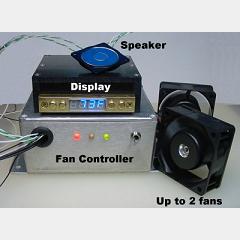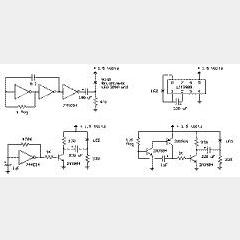Categories
- animatronics (12)
- apple (11)
- arduino (179)
- art (41)
- articles (121)
- artificial intelligence (11)
- automation (421)
- avr (205)
- bitcoin (3)
- breadboard (9)
- cameras (57)
- cars (26)
- cell phones (28)
- clothing mods (21)
- console mods (26)
- dangerous (94)
- desktop mods (24)
- embedded (5)
- flying things (54)
- fpga (22)
- gaming creations (108)
- interface (225)
- internet (17)
- laptop mods (6)
- lasers (22)
- linux (7)
- magnetic (3)
- medical (12)
- microcontrollers (51)
- misc projects (152)
- msp (12)
- music (124)
- pic (90)
- projects (23)
- pyroedu (76)
- raspberry pi (26)
- robots (312)
- security (36)
- sensors (307)
- software (200)
- solar (19)
- stamp (9)
- tools (149)
- tutorials (98)
- Uncategorized (45)
- usb (44)
- wireless (256)
Sponsors


Posted August 13, 2008 by Chris
The 555 timer IC has been around for many decades now and during its peek of popularity was in many commercial products. With the coming of digital timers & microcontrollers the need for the 555 timer has faded, however this classic chip must never be forgotten. The linked website has everything you need to know about the 555 timer.

Posted July 12, 2008 by Chris
The Tesla coil has been around for very long time and human fascination with it has never faded. The sound of high voltage seems to attract humans for some strange reason. This is a guide for building your very own solid state, single transistor Tesla coil.

Posted May 29, 2008 by Chris
This is a simple fan controller that uses an AT-Tiny microcontroller. The fan control is necessary for controlling heat-flow for a computer built into a cabinet. The write-up includes a professional model, software & everything needed to follow along.

Posted May 7, 2008 by Chris
Using electricity to create magnetic fields has been done for many, many years. This project shows you how to create your own magnetic levitator at home using house-hold parts. The write-up also gets into some basic control theory using feedback amplifiers.

Posted May 6, 2008 by Chris
In a back to the basics kind of post, here is a site with a plethora of different blinking circuit schematics. These simple designs work well and are great tools for teaching the basics of electronics as you get to see stuff actually happen. Where-as with most electronics all the difficult stuff is usually transparent.






